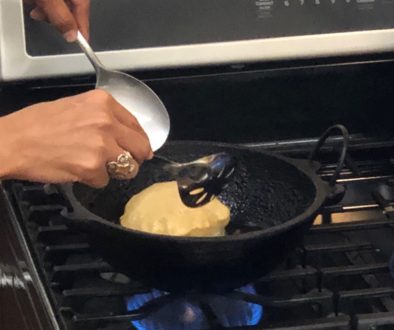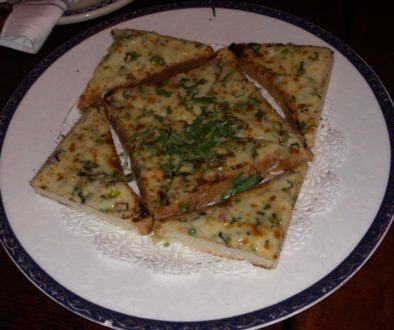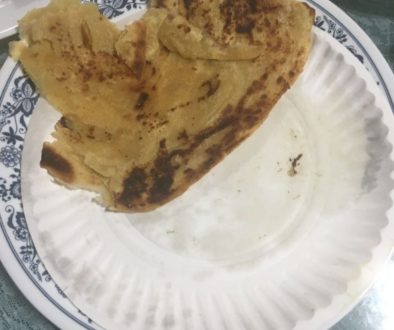Reflections on Coconut Curry Squash
By Claudia Portugal
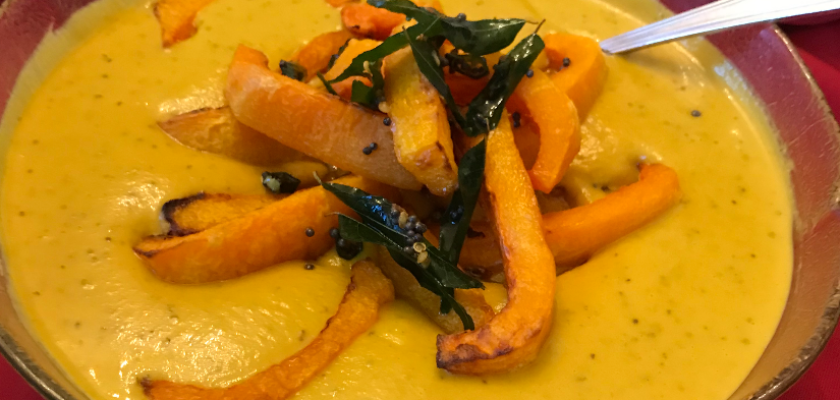
In 2020, I began teaching an Indian food, blogging and photography class at Willliams College, Massachusetts. At each session, students prepared a protein, lentil, vegetable, and bread or rice dish. We concluded the class by sitting around a table, talking and eating all the delicious food prepared.
The class included a Jackson Heights restaurant tour and we observed two chef’s – from Drunken Munkey and Rahi – demonstrate their cooking skills. Below are some of my student’s blog posts.
On our three day food trek through New York City, we saved the best for last. Our visit to Rahi in the West Village proved to be my favorite stop on the tour, as I loved hearing Chef Chintan Pandya’s story first-hand and learning about his take on artisanal Indian cuisine while taking in the artfully decorated dining room. He graciously invited us into the kitchen for an in-depth cooking demonstration, where he answered all our questions about ingredients, process, and preparation. One of the dishes we observed Chef Eric make was a coconut squash curry, a dish I was instantly excited by. The curry combines some of my favorite ingredients such as ginger, garlic, spices, creamy coconut milk, and tender squash into a warming and spicy stew that stimulates all the senses. We were all fascinated by the gorgeous presentation: squash half-moons stacked delicately over a pool of curry sauce, finished with a sprinkle of tempered curry leaves and a drizzle of coconut oil.
We were all so captivated by the dish, vegetarians and meat eaters alike, that we were inspired to create our own take back in Williamstown. Using Kendall’s detailed notes from Chef Eric’s demonstration, we set to work on scaling up the recipe for thirteen guests, using three whole butternut squashes, two cans of coconut milk, and a whole lot of spices.
First we peeled and chopped the butternut squash into cubes and crescents. The cubes would be cooked and blended to give the curry sauce its thick and creamy texture, while the crescents would remain whole and served alongside the sauce. We also chopped one very large red onion, five green chiles and gathered mustard seeds, turmeric, and chili powder.
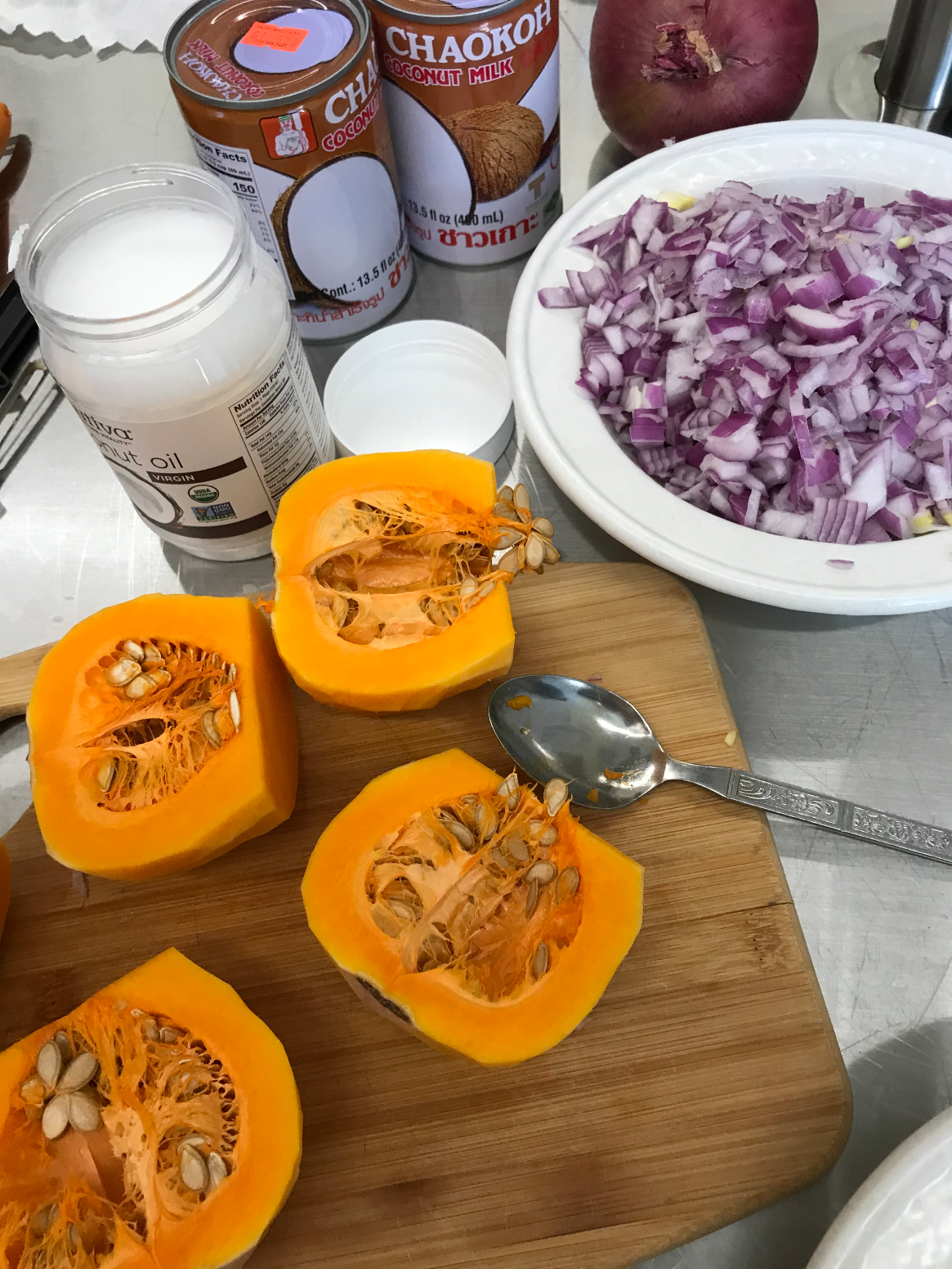
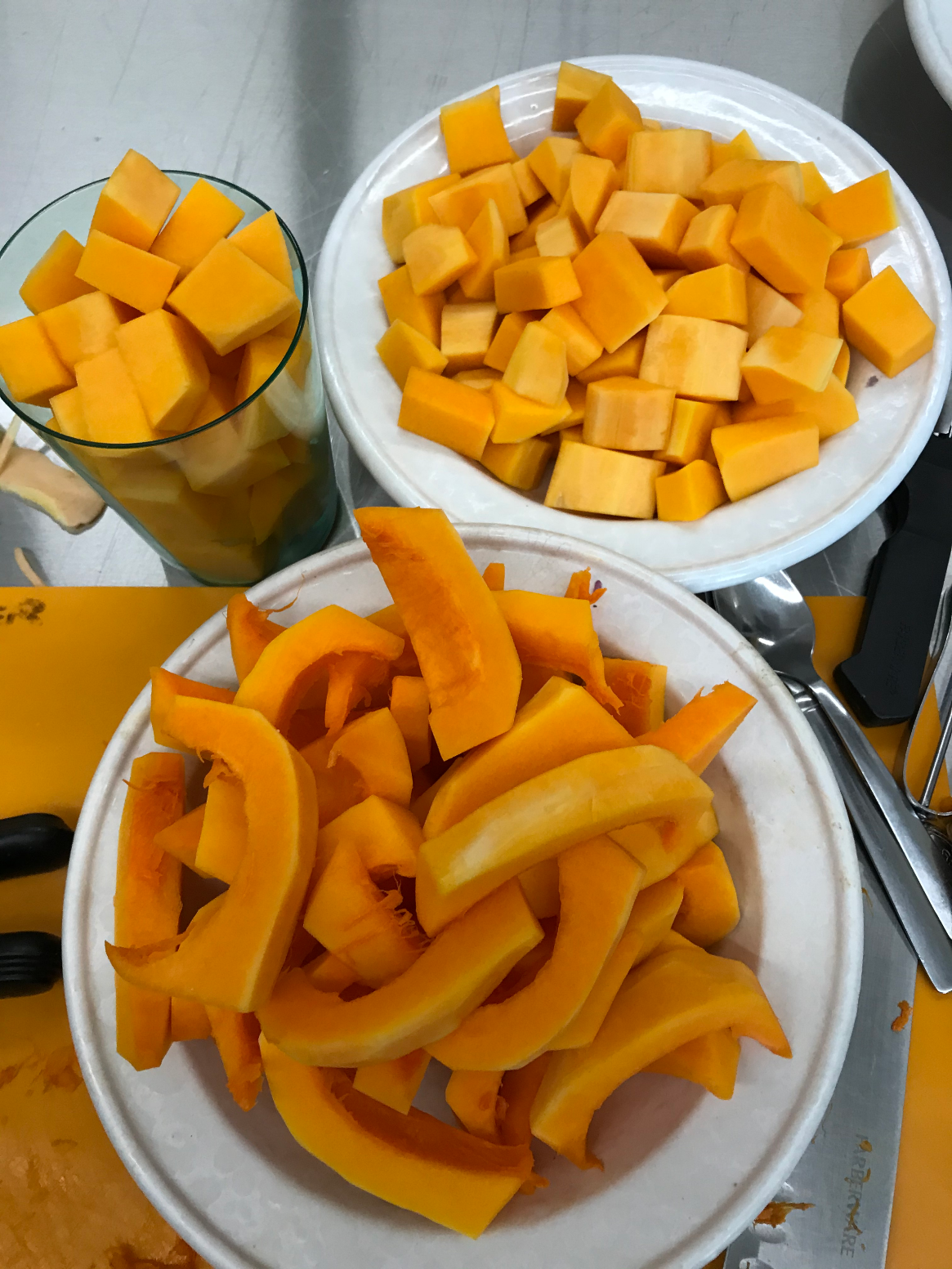
Additional ingredients including red onion, coconut oil, and coconut milk
Once all the prep work was done, we began to cook the master sauce by frying the red onion in coconut oil until translucent. Next, we added about two tablespoons of mustard seeds, which we later discovered was too much, as a slight bitterness could be tasted in the final product. As a result, one tablespoon of mustard seeds should suffice. Once the seeds started to pop, we added turmeric, chili powder, salt, and a handful of curry leaves, followed by the cubed squash. After a few minutes, we added in two cans of coconut milk, a cup of water, and let the sauce simmer until the squash was fork tender. In the meantime, we tossed the squash crescents in melted coconut oil and salt and roasted them until caramelized. Maddie pan-fried cubed chicken breast for the meat option.
When the curry sauce was cooked through, we blended it in batches to produce a thick and creamy consistency. To serve, we poured the sauce into two bowls. One bowl got the cubed chicken, the other most of the squash crescents. Both bowls were garnished with stacked squash crescents peeking out of the creamy sauce and topped with tempered curry leaves, green chilis, and fresh coriander.
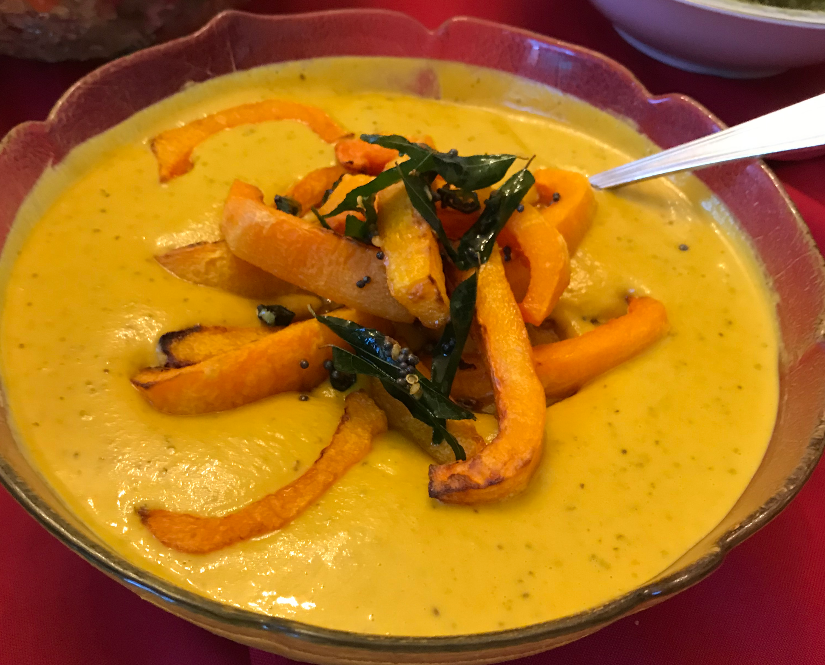
In addition to being downright delicious, this curry is versatile and adaptable. The creamy squash sauce would pair beautifully with tofu, more roasted vegetables, or any other protein. I am sure this dish would also be a great make-ahead dinner or meal prep option, as it would keep well in the fridge or freezer. Going into this course, I thought all Indian food was complex, hard to make, and frankly out of my reach. However, this exploration of Indian cuisine taught me that at its core, Indian cooking is about good quality, staple ingredients and the dutiful layering of flavors over time. From tackling the preparation of dosas, idlis, and puris to working with unfamiliar ingredients like tindora and curry leaves, I learned Indian cooking is not as intimidating and inaccessible as it seems, but a homely and comforting cuisine. This coconut squash curry is a testament to this elegant simplicity and approachability, a dish that will surely become a part of my recipe repertoire.
Claudia Portugal is a senior at Williams College studying Art History and Biology. In her free time, Claudia loves to travel, take photos and spend rainy afternoons experimenting in the kitchen.





